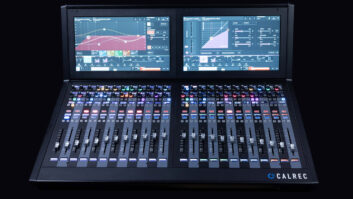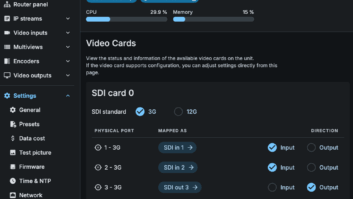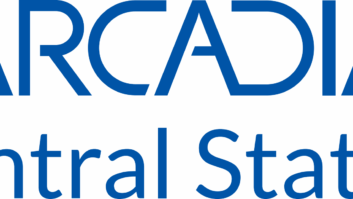Tax Time
Aug 1, 2003 12:00 PM,
Milt Zall
On May 22, congressional conferees pieced together a $350 billion economic stimulus package, the Jobs and Growth Tax Relief Reconciliation Act (JGTRRA), that President George W. Bush signed into law. Commerce Clearing House (CCH), a Chicago-based publisher, reports that though the new law has been “scored” by the Joint Committee on Taxation as costing the U.S. Treasury an additional $330 billion during the next ten years, the true impact of JGTRRA will be much greater. Estimates peg the costs at more than $850 billion, dwarfing Bush’s original $726 billion tax cut in his 2004 budget.
JGTRRA helps everyone. The problem is that most of the provisions are temporary and will expire at a specified date unless Congress extends them. CCH says that the impermanent nature of the cuts, especially for capital gains and dividend rate relief, makes mid- and long-term financial planning more tax-driven than ever before.
One of the major accomplishments of the new tax law is its across-the-board reduction of tax rates. The new law accelerates individual marginal rate cuts that were not scheduled to kick in until 2006 and beyond. Rates above 15 percent generally fall about two percentage points. The highest rate, now at 38.6 percent, falls to 35 percent. All rate cuts are retroactive to January 1, 2003, but all rates revert back to their original state after 2010 unless altered or extended by Congress during the interim.
THE TIME IS NOW
Contractors will be interested in the JGTRRA’s increase in the expensing allowance for firms that put less than $400,000 of assets in use during the fiscal year. Before JGTRRA, you could write off or expense (in lieu of depreciation) only as much as $25,000 in business property or assets placed in service for the year. The new limit is $100,000. This JGTRRA provision is retroactive to January 1, 2003, but it lasts only through 2005. Property placed in service in tax years beginning in 2003, 2004, and 2005 are eligible for the special expensing treatment. For 2004 and 2005, the amounts will be indexed for inflation.
Systems contractors should take advantage of the new expensing limit by purchasing new equipment now instead of later, because it is scheduled to revert back to $25,000 in 2006. Whether Congress will postpone the expanded limit is impossible to predict. Who knows what the economic situation will be in 2006? With the deficit growing by leaps and bounds, this may be your last tax-saving opportunity for a long time. If you are looking to purchase equipment, there is no better time than now to do it.
That advice comes a bit late for Houston Clark, president of Clark ProMedia. Clark ProMedia — located in Cummings, Georgia — is a major acoustic, sound reinforcement, and multimedia design/build firm. Clark says he spent $48,000 on new equipment last year but didn’t expect to spend that much this year. Of course, Clark is right. Although the time is right, there’s no reason to put yourself in crippling debt just to take advantage of a tax break. Dennis Filangeri, a certified financial planner based in San Diego, agrees. “Don’t go out and buy equipment you don’t need just because you can expense it now,” Filangeri says.
JGTRRA also allows contractors to deduct the cost of sport utility vehicles and pickup trucks that weigh more than 6,000 pounds when fully loaded with passengers and cargo, so you can write off the full cost of such vehicles in the first year of ownership and do not have to depreciate them. “Ordinarily, I ship sound reinforcement and multimedia equipment I sell and install,” Clark says. “Maybe I should buy a truck with a lift and do my own shipping. This could be my chance to get a Hummer. Too bad I bought a big SUV last year.”
DEPRECIATION
JGTRRA permits small businesses to depreciate 50 percent of the cost of new capital assets, up from the current 30 percent, which are bought and placed in service between May 5, 2003 and Jan. 1, 2005. This provision lasts through 2004. The rest of the cost is recovered by depreciation. With the increased expensing allowance and depreciation bonus, your firm can write off as much as 67 percent of the cost of new assets in the first tax year.
Normally, the amount you can depreciate is determined by what the IRS calls the Modified Accelerated Cost Recovery System (MACRS). This produces different depreciation periods depending on the type of equipment acquired. For example, say you spend $50,000 on a computer system and other office machinery that would ordinarily qualify for five-year depreciation. JGTRRA allows you to depreciate 50 percent of your outlay or $25,000 right away. In addition, the MACRS allows you to write off an additional $5,000 for a total first-year depreciation of $30,000. If your incorporated business is in the 34 percent tax bracket, the new tax law saves you $2,720 in 2003.
“If your tax adviser says it is to your advantage, all things considered, to use the current 30 percent depreciation rate, you can elect to do so,” Filangeri says. Filangeri reminds contractors that equipment contracted for before May 6, 2003, does not qualify for the 50 percent bonus rate. “Be careful though,” Filangeri says. “Expensing is easy to understand and use, but depreciation is very complex. Get some help from a certified financial planner to help you maximize the usefulness of this benefit.”
Previously, businesses had to write off vehicle purchases over three years. Now more of the costs of business autos and light trucks qualify for expensing. The first-year write-off ceiling for them rises to $10,710. To maximize deductions, if you are placing more than $100,000 of assets in use during any one year, first expense the assets that have the longest depreciation lives. That will allow you to maximize your total deductions, thereby combining expensing and depreciation.
JGTRRA also alters the way dividends are taxed. Dividend income received by an individual shareholder from a domestic or qualified foreign corporation will be taxed at a maximum rate of 15 percent for most taxpayers, just like capital gains. Lower-income individuals will pay tax on their dividends at a new rate of 5 percent. This special tax treatment is temporary, like other JGTRRA provisions, but it is also retroactive. The 15 percent rate is effective for dividends received in tax years beginning after 2002, and it terminates on December 31, 2008. The 5 percent rate terminates on December 31, 2007 and falls to 0 percent for 2008. The old, pre-JGTRRA dividend rates return in 2009.
“Closely held firms will want to review how owners are compensated,” Filangeri says. “The old adage about high salary and low dividends is now reversed, because dividends are now tax advantaged.”
THE BOTTOM LINE
JGTRRA offers interesting opportunities for system contractors. Because of JGTRRA complexity and temporary nature, seeking professional advice is highly recommended.
Revised tax withholding tables for your employees are now available from the IRS at www.irs.gov/pub/irs-pdf/n1036.pdf. The tables reflect all the personal income tax rate changes. Your firm can use them now.
Milt Zallis president of Zall Enterprises, an editorial consulting firm based in Silver Spring, Maryland. He writes about taxes, investments, technology, the Internet, and human resources and business issues. He is a certified internal auditor and a registered investment advisor. He can be reached at[email protected].
Know Your Taxes
Additional JGTRRA information:
- The cost of off-the-shelf computer software can be expensed under JGTRRA.
- You can make or revoke expensing elections on amended returns without first securing the consent of the IRS.
- The accumulated earnings tax and personal holding company tax temporarily falls to 15 percent under JGTRRA.
- There is a short deferral for the corporate estimated tax payment ordinarily due September 1, 2003. You now have until October 1, 2003 to make this payment.










